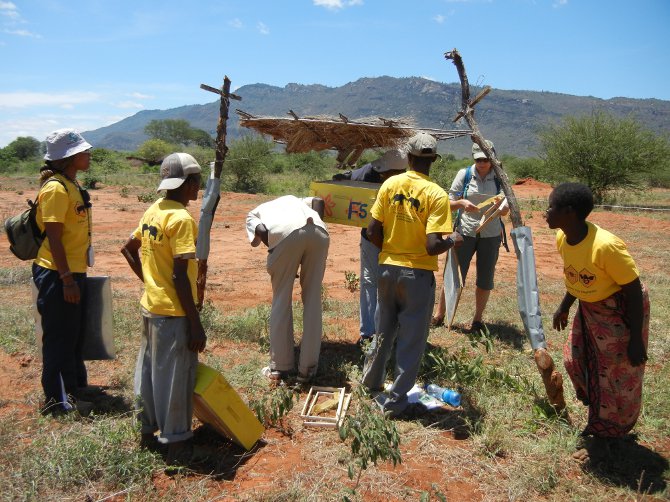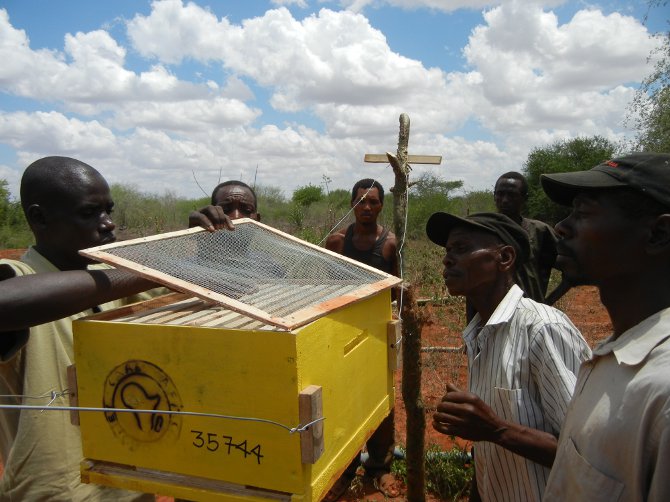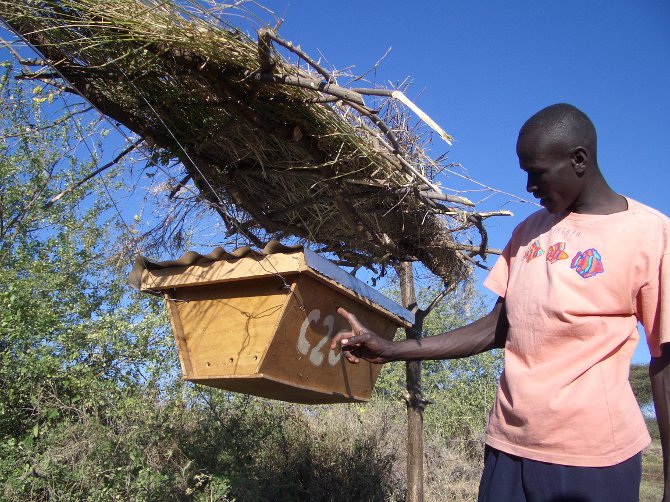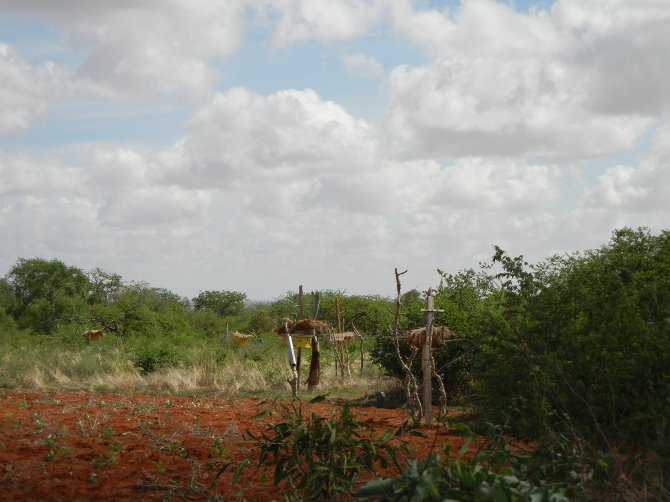Where there are farms along the perimeter of Serengeti National Park, there are elephants – and all manner of attempts to prevent crops from being trampled. Farmers have tried various elephant-deterring techniques, from beating tin cans to lighting fires, most of which haven’t appeared to work. Could bee colonies do the job?
Now officials in Tanzania’s Mara Region have asked authorities to construct fences to keep elephants away from villages and agricultural holdings. The Mara Regional Commissioner, John Tuppa, told the Tanzanian newspaper, The Citizen, that the move would help end the destruction of crops by stray elephants. Tuppa is asking for fences to be built as soon as possible.
The ultimate dilemma, however, may be finding ways for humans and elephants to live side-by-side. Biologist Eivin Røskaft, at the Norwegian University of Science and Technology thinks there may be several answers. “The elephant-villager conflict didn’t just start,” he says. “Now there are more open discussions about it. Fortunately, elephant poaching hasn’t really reached the Serengeti, so its elephant numbers seem to be slowly growing.”
But the region’s human population has grown much faster, doubling over the last 18 to 20 years. “Elephants are raiding crops during the night,” says Røskaft. “These crops are mostly close to the park border, so elephants return to the Serengeti as soon it’s light in the morning.” Elephants are stressed when they leave the park, he says, but the crops are too tempting. “The fact that elephants are more stressed outside the park doesn’t mean they won’t take such risks.”
How to end the stalemate? Biologist Lucy King, leader of Save the Elephants’ Elephants and Bees Project, may have an answer: “beehive fences.”

Beehive fences are simple and cheap, according to King, and are made with locally sourced materials. Hives are hung every thirty feet and linked together. If an elephant touches one of the hives, or the interconnecting wire, the beehives all along the fence swing and release the stinging insects inside.

In most areas, King says, beehive fences are easily adopted. Keeping bee colonies is an age-old activity, one in which the majority of African communities already participate. Traditional communities often harvest honey from wild hives and use it as a natural food source and sweetener. Although modern beekeeping is sometimes new to farmers, they adapt quickly, says King, to the skills needed to keep hives.

With her assistance, researchers in Kenya and other African countries are testing the beehive fence concept. Biologists at the Serengeti Development Research and Environmental Conservation Centre have conducted trials of beehive fences in villages on the border of Serengeti National Park. Elephants were chased from farms and left to wander toward the beehive fences. When the elephants reached the rows of swinging hives, they diverged around them, and then continued on their way – on the other side of the villages. Since then, the scientists say, there have been no elephant crop-raiding incidents reported along those routes.

“Bees do not like elephants,” Røskaft confirms. The feeling, it appears, is mutual. A tiny bee may have more strength than a thundering herd of pachyderms.
To comment on this story: Login (or sign up) to our app here - it's a troll-free safe place 🙂.![]()
HOW TO GET THE MOST OUT OF AFRICA GEOGRAPHIC:
- Travel with us. Travel in Africa is about knowing when and where to go, and with whom. A few weeks too early / late and a few kilometres off course and you could miss the greatest show on Earth. And wouldn’t that be a pity? Browse our ready-made packages or answer a few questions to start planning your dream safari.
- Subscribe to our FREE newsletter / download our FREE app to enjoy the following benefits.
- Plan your safaris in remote parks protected by African Parks via our sister company https://ukuri.travel/ - safari camps for responsible travellers






